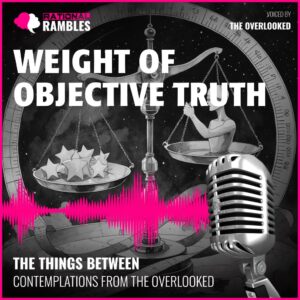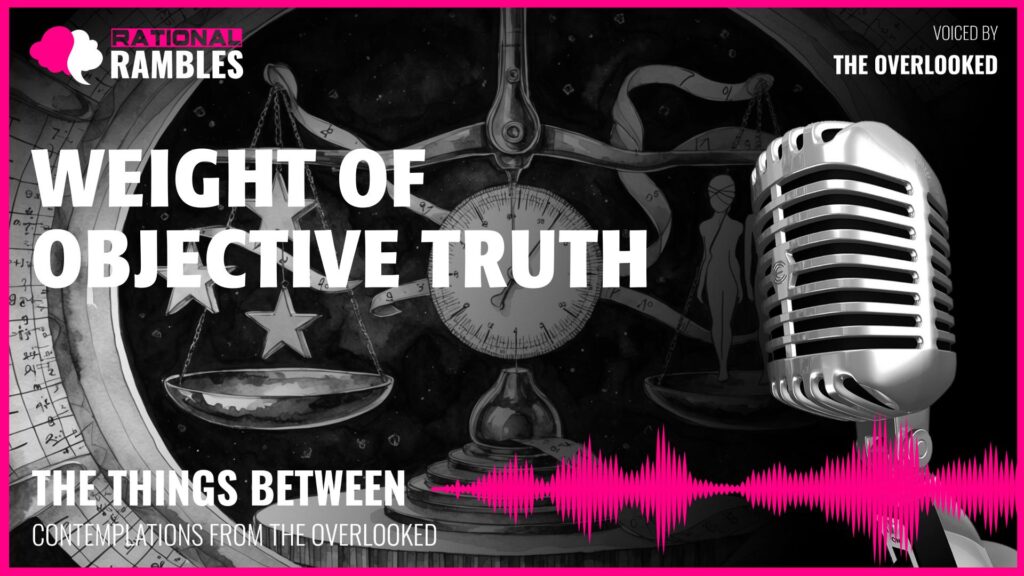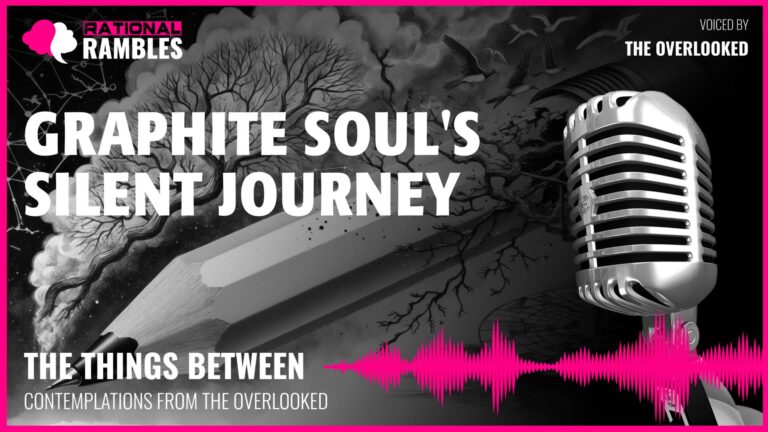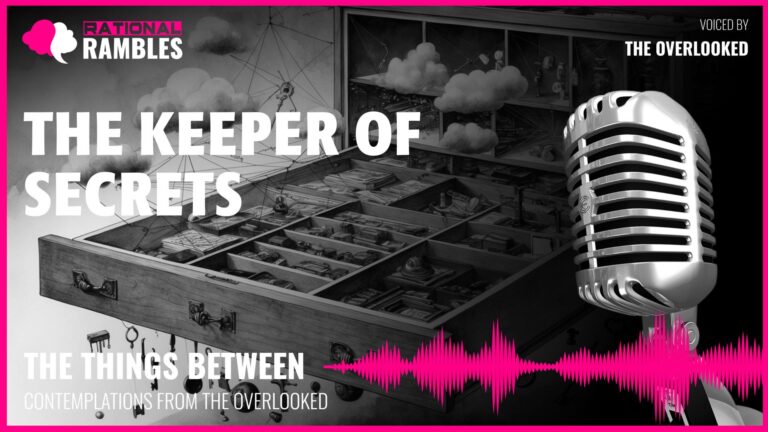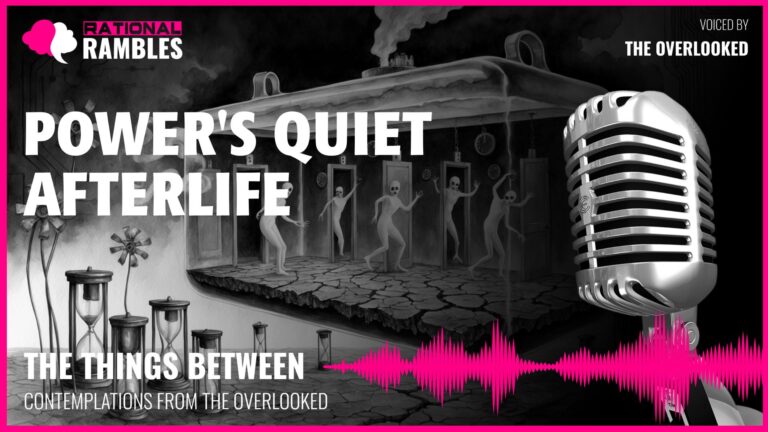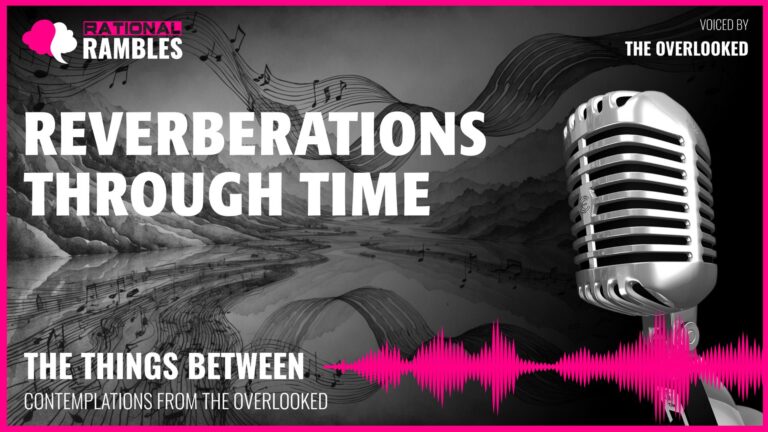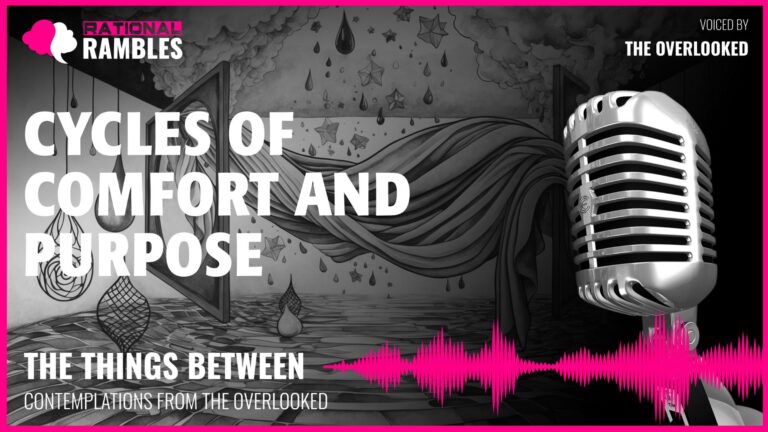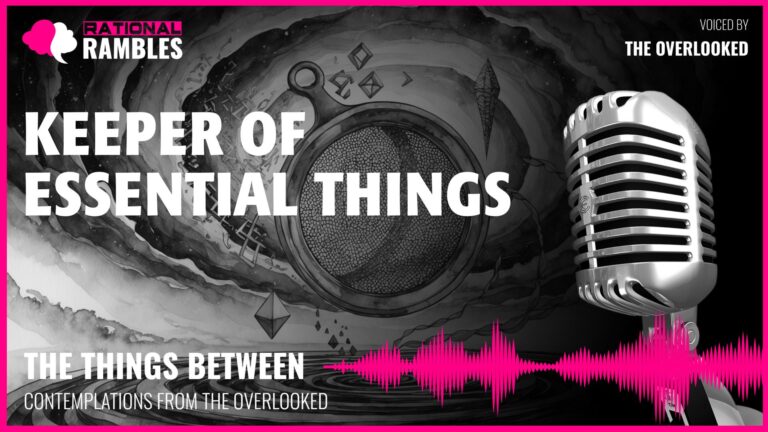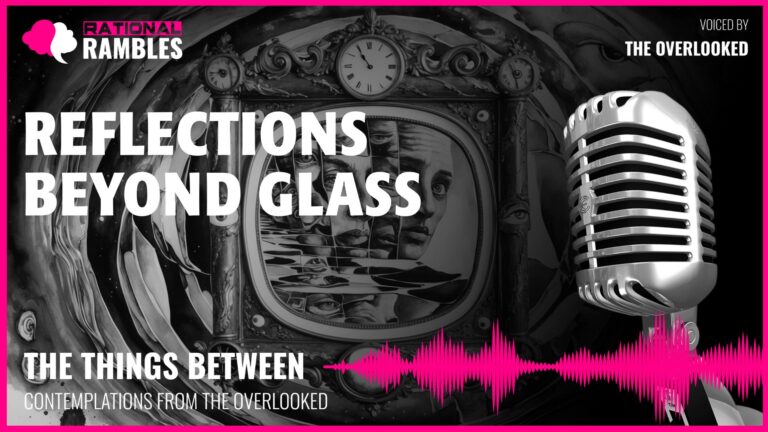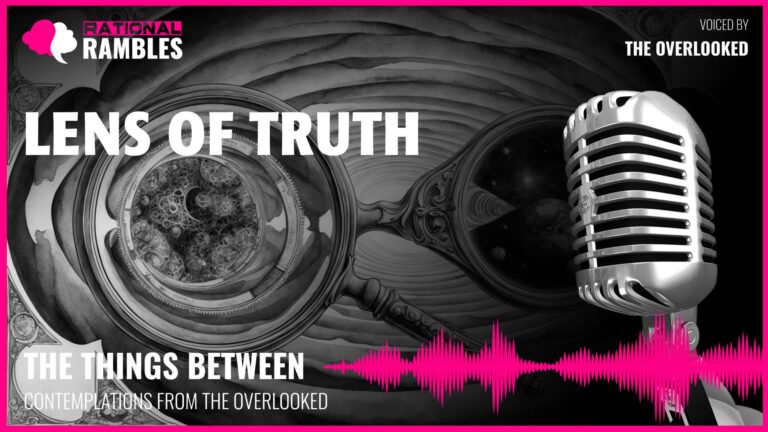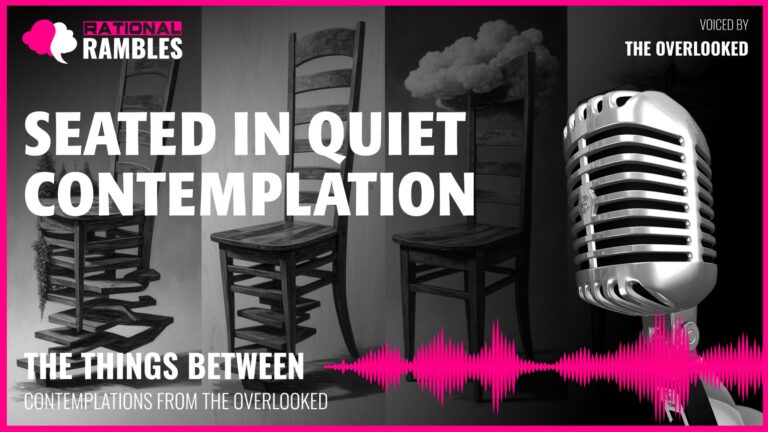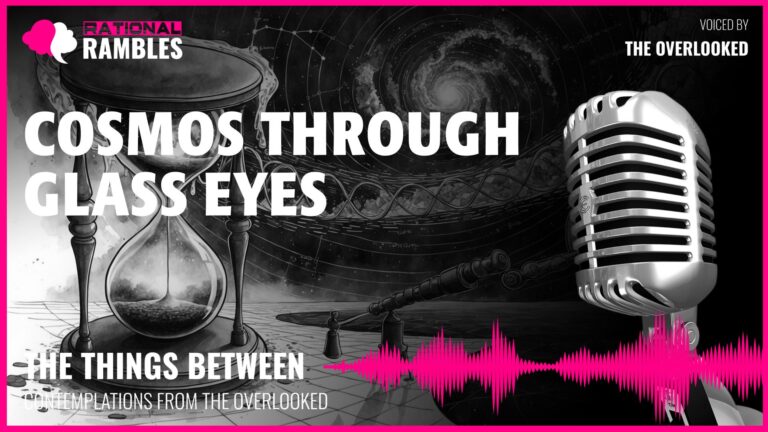The Burden of Truth: Exploring Objectivity, Balance, and Measurement in Human Experience
Introduction
In the pursuit of understanding our place in the universe, humanity has long wrestled with fundamental questions about truth, objectivity, and measurement. We create instruments to quantify the world around us, yet these very tools often reveal as much about our relationship with reality as they do about reality itself. The cold, uncompromising nature of objective measurement exists in perpetual tension with our subjective experience of being measured. This philosophical tension—between what is and how we feel about what is—permeates human existence at every level.
This article explores the profound philosophical implications of measurement, objectivity, and balance. We will examine how the act of quantifying reality intersects with our search for meaning, our conception of justice, and our understanding of existence itself. How do we reconcile the impartial nature of objective truth with our deeply emotional response to it? What can the principles of measurement and balance teach us about living well? And in a world increasingly dominated by metrics and data, what does it mean to be both the measurer and the measured?
The Nature of Objectivity
Objectivity—the quality of being uninfluenced by personal feelings or opinions in representing facts—stands as one of the most cherished ideals in both scientific inquiry and ethical reasoning. Yet this seemingly straightforward concept opens into a labyrinth of philosophical questions. What makes a measurement truly objective? Is pure objectivity even possible? And what value does objectivity hold in a world of subjective experience?
The Myth of Absolute Objectivity
The notion of absolute objectivity suggests the existence of a perspective-free vantage point from which reality can be observed exactly as it is. This view has roots in Platonic idealism, where perfect forms exist independently of human perception, and extends through the Enlightenment’s faith in reason and measurement as paths to unvarnished truth.
However, contemporary philosophy has largely challenged this notion. As Thomas Nagel argued in his famous essay “What Is It Like to Be a Bat?”, the very structure of consciousness means that observation always occurs from a particular perspective. Even our most precise measuring instruments are designed according to human priorities, calibrated to human-created standards, and interpreted through human cognitive frameworks.
Consider the history of the kilogram, long defined by a physical prototype—a platinum-iridium cylinder kept in a vault in Paris. This “objective” standard was itself a human creation, susceptible to minute changes over time as atoms were gained or lost from its surface. Only in 2019 was the kilogram redefined in terms of fundamental physical constants. This evolution illustrates how even our most carefully constructed standards contain elements of human convention and technological limitation.
Environmental factors further complicate claims to absolute objectivity. Humidity affects electronic scales; temperature influences reaction times; calibration drifts over time. The very instruments we rely upon for objective measurement are themselves embedded in physical contexts that influence their operation. This suggests a more humble understanding of objectivity—not as a perfect mirror of reality, but as a disciplined effort to minimize bias and account for contextual influences.
The Power and Ethics of Objective Reporting
Despite these limitations, there remains profound value in the pursuit of objectivity. An objective measurement treats all subjects equally, without favoritism or prejudice. A scale displays the same number regardless of who stands upon it—regardless of their status, wealth, character, or desire. This impartiality embodies a kind of elemental justice that transcends human social hierarchies.
The philosopher John Rawls might recognize in such blind measurement an echo of his “veil of ignorance” thought experiment—where justice emerges from decisions made without knowing one’s own position in society. The scale, ignorant of identity, responds only to the physical reality before it. In a world often distorted by preference and bias, such dispassionate assessment represents a rare form of equality.
However, this raises ethical questions about the responsibilities that come with objective measurement. If a measuring instrument provides information that causes distress, does it bear any responsibility for that distress? Most would argue that it does not—the truth value of information exists independently of its emotional impact. Yet in human contexts, we recognize that how truth is conveyed matters greatly.
This tension appears in medical ethics, where truthful disclosure must be balanced with compassionate delivery. It emerges in journalism, where factual reporting must consider its social impact. And it surfaces in everyday life, where honesty must be tempered with kindness. The philosophical challenge becomes not whether to pursue objectivity, but how to integrate objective truth with human values and needs.
Measurement and Meaning
The act of measurement is fundamentally an attempt to know the world, to translate physical reality into terms we can comprehend and compare. Yet measurement is never merely a physical operation—it is simultaneously a cognitive and cultural act laden with interpretive dimensions.
The Metaphysics of Measurement
What happens in the moment of measurement? At its most basic level, measurement establishes a relationship between an unknown quantity and a known standard. This comparative act transforms continuous physical reality into discrete numerical representation. But this transformation is never neutral or complete.
Martin Heidegger’s concept of “enframing” (Gestell) suggests that modern technical measurement inherently reconfigures the world as a “standing reserve” of calculable resources. In measuring something, we subtly change our relationship to it—the tree becomes board feet of lumber, the person becomes a set of vital statistics. Measurement thus simultaneously reveals and conceals; it brings certain aspects of reality into sharp focus while necessarily obscuring others.
The philosopher Alfred North Whitehead warned against what he called “the fallacy of misplaced concreteness”—the error of mistaking the abstract measurements for the rich, multidimensional reality they represent. A person’s weight, height, blood pressure, and body mass index provide valuable data points, but these measurements are not the person. The map is not the territory.
This recognition reveals an important limitation: measurement always occurs in relation to a chosen parameter. We measure what we deem important, what serves our purposes, what fits our technological capabilities. A scale measures mass, not happiness; temperature, not beauty; pressure, not wisdom. The choice of what to measure and how to measure it reflects underlying values and priorities that precede the act of measurement itself.
From Measurement to Meaning
Humans inevitably invest measurements with meaning far beyond their numerical value. A blood pressure reading becomes a verdict on health; a financial balance transforms into a measure of success; a weight measurement metamorphoses into a judgment of discipline or worth. This meaning-making process reveals something profound about human cognition: we continuously translate quantitative data into qualitative assessment.
This translation is neither arbitrary nor universal. It occurs within cultural frameworks that determine which measurements matter and what they signify. In some cultures and eras, a larger body mass indicated prosperity and health; in others, it suggests the opposite. Some societies prioritize measuring economic productivity; others emphasize measures of wellbeing or sustainability.
The philosopher Charles Taylor describes humans as “self-interpreting animals” who cannot separate bare facts from their significance in our lives. We inhabit what he calls “moral space” where measurements take on meaning through their relationship to our values and self-understanding. The number on a scale is never just a number—it is data entering into an interpretive framework already laden with cultural meanings, personal history, and emotional associations.
This meaning-making process explains why objective measurements can trigger such powerful subjective responses. The sigh of disappointment or smile of satisfaction that follows a measurement reveals the gap between what is measured and what is valued. The emotional response doesn’t challenge the measurement’s accuracy; rather, it emerges from the measurement’s intersection with human hopes, fears, and ideals.
The Philosophy of Balance
Balance stands as one of the most ubiquitous and profound metaphors in human thought. From the scales of justice to the concept of equilibrium in natural systems, balance represents a fundamental principle that extends far beyond physical mechanics into ethical, psychological, and social dimensions.
Balance as Physical and Metaphysical Principle
At its most literal level, balance describes a physical state where opposing forces reach equilibrium. A scale achieves balance when the downward force of gravity on an object is precisely counteracted by the upward force of the mechanism’s resistance. This physical equilibrium represents a kind of resolved tension—not the absence of forces, but their perfect counteraction.
Ancient philosophers recognized balance as a cosmic principle. Heraclitus described the universe as governed by a “tension of opposites,” where stability emerges not from stasis but from the dynamic interplay of contrary forces. For the Taoists, the interplay of yin and yang—complementary opposing forces—constitutes the fundamental rhythm of existence. These traditions suggest that balance is not merely a static condition but a dynamic process of continuous adjustment and readjustment.
The pre-Socratic philosopher Anaximander introduced the concept of cosmic justice as fundamentally about balance—the rectification of imbalance through compensatory change. When elements exceed their proper measure, counterbalancing forces restore equilibrium. This ancient insight aligns with modern ecological understanding, where homeostatic mechanisms maintain systemic balance through negative feedback loops.
Balance thus emerges as both descriptive and normative—it describes how natural systems function and prescribes how they ought to function. This dual nature makes balance a powerful bridge concept between the physical sciences and ethical reasoning.
Ethical Dimensions of Balance
The metaphor of balance permeates ethical traditions across cultures. Aristotle’s doctrine of the mean locates virtue precisely in the balanced state between excess and deficiency—courage as the balance between rashness and cowardice, generosity as the balance between prodigality and miserliness. This suggests that ethical living requires continuous calibration, a responsive adjustment to changing circumstances rather than rigid adherence to absolute rules.
Buddhist ethics similarly emphasizes the Middle Way between self-indulgence and self-mortification. The Eightfold Path prescribes “right” or balanced approaches to fundamental aspects of life, from viewpoint to livelihood to mental state. This balance is not a compromise between extremes but a transcendence of the dualistic thinking that creates artificial oppositions.
In social justice traditions, balance appears in the concept of equity—the proper distribution of resources, opportunities, and burdens. The iconic image of Justice blindfolded with balanced scales symbolizes the impartial weighing of claims and counterfeits. Yet this tradition also recognizes that formal equality sometimes perpetuates substantive inequality. True balance may require unequal treatment to counteract pre-existing imbalances—a recognition that calibration must account for historical context.
Personal ethics likewise invokes balance in concepts like work-life balance, emotional equilibrium, and sustainable living. These frameworks suggest that the good life emerges not from maximizing any single value but from achieving harmonious integration of multiple, sometimes competing, values. The philosopher Martha Nussbaum’s capabilities approach to human flourishing emphasizes precisely this balanced development across multiple dimensions of human potential.
The Paradox of Responsive Stability
A sophisticated understanding of balance reveals an apparent paradox: true balance requires constant adjustment. A tightrope walker maintains balance not by rigid stillness but through continuous micro-adjustments responding to changing conditions. Similarly, biological homeostasis works through dynamic feedback mechanisms that detect and correct deviations from optimal states.
This insight challenges simplistic notions of balance as mere compromise or stasis. Genuine balance emerges from responsive adaptation while maintaining fundamental principles—what the philosopher Hans-Georg Gadamer might call a “fusion of horizons” that preserves core identity while engaging new contexts.
In complex systems, balance often exists not at a single point but within a range of viable states. This “requisite variety” (to use cyberneticist Ross Ashby’s term) provides resilience through adaptability. A system with multiple balanced states can respond to disturbances without catastrophic failure, maintaining functional integrity despite environmental change.
This nuanced understanding of balance offers wisdom for navigating personal ethics, social policy, and environmental challenges. It suggests that sustainability—ecological, personal, or social—depends not on preserving fixed conditions but on maintaining adaptive capacity within vital parameters. The balanced life, like the balanced ecosystem, manifests not as rigid consistency but as resilient adaptability guided by core principles.
Truth, Justice, and Measurement
The relationship between measurement, truth, and justice runs deep in human thought. Measurement promises access to objective reality—a foundation for just assessment uncontaminated by bias or preference. Yet the path from accurate measurement to just action is neither straightforward nor self-evident.
The Value of Uncompromising Truth
There exists a philosophical tradition, stretching from Socrates through Kant to contemporary analytical philosophy, that holds truth as an unconditional good—valuable in itself regardless of consequences. In this view, accurate measurement serves as a moral act simply through its fidelity to reality. As Kant might argue, truth-telling respects the rational autonomy of beings by allowing them to make decisions based on accurate information rather than comforting falsehoods.
This perspective suggests that even uncomfortable truths possess an inherent dignity that comfortable illusions lack. The momentary discomfort of confronting one’s actual weight, financial situation, or health metrics serves the greater good of allowing rational response to reality. The physician who accurately diagnoses a concerning condition enables treatment; the accountant who precisely calculates a deficit enables correction; the scale that displays an unwelcome number enables informed decision-making.
Philosopher Bernard Williams distinguished between “moral” and “factual” truth, but argued that both serve human flourishing by anchoring us in shared reality. Without commitment to factual truth, Williams argued, social cooperation becomes impossible, as we lack common reference points for collective action. By extension, accurate measurement provides the common empirical ground that makes rational coordination possible.
The Complexities of Numerical Justice
While measurement provides a foundation for fairness through its impartiality, the application of measurement to justice raises profound questions. Is treating everyone identically—measuring all by the same standard—truly just? Or does justice require responsive adaptation to different circumstances?
Formal equality—treating like cases alike—represents one dimension of justice. A scale that gives the same reading for the same mass regardless of who stands upon it embodies this principle. Yet substantive equality recognizes that equal treatment of unequally situated individuals may perpetuate or exacerbate inequality. As Anatole France ironically observed, “The law, in its majestic equality, forbids the rich as well as the poor to sleep under bridges, to beg in the streets, and to steal bread.”
Aristotle’s concept of proportional justice offers one resolution to this tension. He argued that justice requires treating equal cases equally and unequal cases unequally, in proportion to their relevant differences. This suggests that measurement must be contextually sensitive to be genuinely just. A grading system that evaluates all students by identical standards without accommodating learning differences may be formally equal but substantively unfair.
Modern justice theories have wrestled with this complexity. John Rawls’s difference principle permits inequalities only when they benefit the least advantaged. Amartya Sen’s capability approach focuses on equalizing fundamental capacities rather than resources or outcomes. Both recognize that meaningful justice requires more nuanced consideration than simple identical treatment.
The Ethics of Algorithmic Measurement
Contemporary society increasingly delegates measurement and assessment to algorithmic systems that promise greater objectivity through computational precision. These systems—from credit scores to school admissions algorithms to criminal risk assessments—raise new questions about the relationship between measurement and justice.
Such systems often embed existing social biases while presenting as objective. An algorithm trained on historically biased data will reproduce that bias in seemingly neutral numerical form. This “laundering of bias through mathematics” (in mathematician Cathy O’Neil’s phrase) creates a particularly insidious form of injustice—one clothed in the appearance of objective measurement.
The philosopher Miranda Fricker’s concept of “epistemic injustice” illuminates another dimension of this problem. When measurement systems privilege certain types of information while discounting others, they can systematically disadvantage those whose experiences or knowledge don’t fit predetermined metrics. A healthcare algorithm that measures only physiological factors while ignoring social determinants of health will produce technically accurate but contextually inadequate assessments.
These complexities don’t invalidate the importance of objective measurement for justice, but they caution against naive faith in measurement as inherently just. True justice requires not just accurate measurement but thoughtful determination of what to measure, how to interpret measurements, and how to respond to them in ways that honor human dignity and promote flourishing.
The Existential Significance of Being Measured
Beyond its epistemological and ethical dimensions, measurement carries profound existential significance. Being measured—having one’s physical properties, capabilities, or characteristics quantified—shapes how we understand ourselves and our place in the world. This existential aspect of measurement reveals deep connections between quantification and identity, between being measured and being known.
Measurement and Self-Understanding
The philosopher Charles Taylor argues that humans are “self-interpreting animals” who understand themselves through frameworks of meaning. Measurements provide one such framework—a way of articulating and assessing aspects of our being. When we step on a scale, check our blood pressure, or review our performance metrics, we engage in acts of self-interpretation mediated through numerical values.
This quantitative self-knowledge has ambiguous implications. On one hand, it offers clarity and precision—replacing vague impressions with specific data points. On the other hand, it can reduce the rich complexity of embodied experience to a limited set of parameters. The existentialist critique of scientific objectification, articulated by thinkers like Gabriel Marcel, warns against confusing these partial measurements with comprehensive self-understanding.
Martin Buber’s distinction between “I-It” and “I-Thou” relationships offers insight here. Measurement inherently involves an “I-It” orientation—treating the measured subject as an object of analysis rather than a dialogical partner. While this objective stance provides valuable information, it cannot capture the fullness of subjective being that emerges in genuine “I-Thou” encounter. Complete self-understanding requires both objective measurement and subjective awareness.
The phenomenology of being measured reveals additional complexities. The subject who knows they are being measured often experiences heightened self-consciousness—what philosopher Jean-Paul Sartre might recognize as the uncomfortable awareness of being an object for another’s consciousness. This awareness can trigger anxiety, performance effects, and behavioral changes that affect the very qualities being measured.
Measurement, Vulnerability, and Intimacy
Being measured involves a particular kind of vulnerability—exposing oneself to assessment, classification, and potential judgment. Whether stepping on a scale, undergoing a medical examination, or submitting work for evaluation, the measured subject opens themselves to a kind of knowing that they cannot fully control. This vulnerability creates an asymmetrical power relationship between measurer and measured.
Yet this vulnerability also creates the possibility for a particular kind of intimacy. To be fully measured is to be known in ways that may not be accessible through other forms of encounter. The physician who measures vital signs, the teacher who assesses learning, or even the scale that registers weight engages with aspects of being that might otherwise remain obscure. This knowing can become a form of care when conducted with respect for the dignity of the measured subject.
Emmanuel Levinas’s ethics of the face offers a valuable perspective here. While measurement objectifies, ethical measurement acknowledges the irreducible otherness of the measured subject—recognizing that no set of measurements can fully capture the mystery of another’s being. This ethical stance maintains the tension between the value of objective knowledge and respect for subjective dignity.
The psychologist and philosopher William James observed that “a man has as many social selves as there are individuals who recognize him.” Similarly, we might say that a person has as many measured selves as there are systems that measure them. Our weight, blood pressure, credit score, academic performance, productivity metrics, and countless other measurements constitute partial selves distributed across various systems of knowing. The existential challenge becomes integrating these fragmented measurements into a coherent sense of identity.
Measurement and Mortality
Perhaps most profoundly, measurement confronts us with our finite, physical nature. To be measured is to acknowledge limitations—to recognize that our bodies occupy determinate space, that our capabilities have quantifiable boundaries, that our time is countable. These measurements place us firmly within the physical world subject to natural laws rather than transcending them.
The philosopher Martin Heidegger characterized human existence as “Being-toward-death”—authentically living with awareness of our mortality. Measurement provides one avenue for this confrontation with finitude. The medical checkup that tracks declining function, the calendar that counts passing years, or the scale that registers physical changes all bring us face-to-face with our temporal nature.
Yet measurement also offers a kind of transcendence. By translating ephemeral physical existence into recorded numbers, measurement creates an abstracted representation that outlasts the moment of assessment. The medical record, the sports statistic, or the scientific measurement preserves something of the measured subject beyond their immediate physical presence—creating what philosopher Bernard Stiegler might call a “tertiary retention” that extends human memory beyond individual consciousness.
This interplay between confronting finitude and creating lasting representation reveals the existential paradox at the heart of measurement—it simultaneously grounds us in physical reality and abstracts us from it, reminding us of our limitations while extending our presence through symbolic representation.
Everyday Ethics of Measurement
The philosophical dimensions of measurement aren’t confined to abstract theoretical realms—they permeate everyday life through countless interactions with measuring devices and measured values. These quotidian encounters with measurement shape our daily decisions, relationships, and self-understanding in ways that reveal the practical ethics of quantification.
The Ritual of Measurement
Regular measurements often take on ritual significance in daily life. The morning weigh-in, the annual physical, the monthly budget review—these routine assessments structure time and attention in ways that resemble religious observances. Like ritual, they create moments of heightened awareness, transition, and potential transformation.
Anthropologist Mary Douglas noted that rituals create boundaries between categories and mark transitions between states. Similarly, measurement rituals distinguish “before” from “after,” creating discrete phases in otherwise continuous experience. The moment of stepping onto a scale marks the transition from unmeasured to measured existence—from unknowing to knowing.
These measurement rituals also establish what philosopher Albert Borgmann calls “focal practices”—activities that gather our scattered attention and reorient us toward specific values. The practice of regular measurement focuses awareness on particular aspects of existence, elevating them to conscious consideration. What we routinely measure becomes what we routinely attend to, shaping our practical priorities.
The ethical question becomes whether our measurement rituals align with our deeper values. Do we measure what truly matters, or merely what is convenient to quantify? Do our measurement practices foster attention to meaningful aspects of life, or do they distract us with trivial metrics? These questions invite critical examination of habitual measurement and its role in shaping everyday consciousness.
Measurement and Self-Discipline
Perhaps nowhere is the ethical dimension of measurement more evident than in practices of self-discipline and personal development. From fitness tracking to productivity monitoring to habit formation apps, contemporary culture offers countless tools for quantitative self-regulation. These technologies promise self-improvement through measurement—knowing precisely how much we exercise, sleep, work, or spend as a path to optimizing these behaviors.
This quantified self-discipline has philosophical antecedents in ancient traditions. Pythagoreans practiced daily self-examination, cataloging their actions and measuring them against ethical standards. Stoics like Seneca advocated regular self-assessment to track moral progress. These practices recognized that measurement provides both motivation and feedback for ethical development.
The philosopher Michel Foucault identified such self-measuring practices as technologies of the self—techniques through which individuals transform themselves to achieve desired states of being. In his analysis, these practices always operate within broader structures of power and knowledge that shape what kinds of selves we aspire to become. The modern fitness tracker or productivity app thus represents not just a neutral measuring tool but a materialization of cultural values about what constitutes the optimal body or productive life.
This raises critical questions about the ethics of self-measurement: Who benefits when we measure ourselves according to standardized metrics? What values are embedded in the default settings of our measuring devices? What aspects of human flourishing resist quantification and thus remain invisible in measurement-based self-discipline? A mindful approach to self-measurement requires engaging these questions rather than uncritically adopting measurement regimes.
Measurement in Relationships
Measurement also shapes interpersonal dynamics in ways that reveal ethical complexities. When we measure others—assessing their performance, tracking their behavior, or evaluating their characteristics—we establish particular kinds of relationships mediated through quantification. The parent who monitors a child’s grades, the manager who tracks employee metrics, or the physician who measures patient vitals engages in a form of care that works through measurement.
Philosopher Virginia Held’s ethics of care offers valuable perspective here. Care requires attentiveness to particular needs rather than abstract principles—suggesting that ethical measurement in relationships must be responsive to individual circumstances rather than rigidly standardized. This responsive measurement acknowledges that the same metric may have different significance for different individuals, requiring contextual interpretation.
The ethics of relationship measurement also involves questions of consent, transparency, and power. When is it appropriate to measure another person? What obligation do we have to share our measurements with those being measured? How can measurement serve mutual flourishing rather than control? These questions become increasingly urgent as technology enables more pervasive and granular measurement of others, from classroom analytics to workplace monitoring to health tracking.
The philosopher Emmanuel Levinas emphasized that ethical relationships must preserve the alterity (otherness) of the other—respecting their fundamental mystery and irreducibility to categories. This suggests an ethics of measurement that maintains humility about what can be known through quantification, recognizing that no set of measurements can fully capture another’s being.
Conclusion: Toward a Philosophy of Measured Living
Throughout this exploration of measurement, objectivity, and balance, we have encountered recurring philosophical tensions: between objective truth and subjective meaning, between impartial assessment and contextual justice, between quantitative precision and qualitative experience. These tensions don’t represent problems to be solved but productive paradoxes that invite more nuanced understanding of measurement’s role in human life.
A philosophy of measured living emerges not from resolving these tensions but from dwelling mindfully within them. It acknowledges both the value of objective measurement and its limitations—recognizing measurement as a powerful tool for knowing reality while maintaining awareness that reality always exceeds what can be measured. It values truth-telling while attending to how truth is communicated and received. It seeks balance not as a fixed point but as responsive equilibrium maintained through continuous adjustment.
This measured approach to living challenges both uncritical faith in numbers and anti-scientific rejection of measurement. It suggests that wisdom lies in neither measuring everything nor measuring nothing, but in discerning what deserves to be measured, how to interpret measurements responsibly, and how to integrate measured knowledge with other forms of understanding.
Several philosophical principles might guide this measured living:
Epistemic humility recognizes the inherent limitations of measurement—acknowledging that our instruments, standards, and interpretive frameworks are themselves human constructs embedded in particular contexts. This humility doesn’t abandon the pursuit of objective knowledge but approaches it with awareness of its partiality and contingency.
Contextual interpretation understands that measurements acquire meaning only within interpretive frameworks. The same number may signify progress or failure, health or illness, depending on circumstance and trajectory. Wise interpretation considers not just the measurement itself but its context, history, and relationship to other values.
Balanced attention maintains awareness of both what can be measured and what eludes measurement. It values quantitative precision without reducing reality to what can be quantified. This balanced attention preserves space for qualitative experience, subjective meaning, and ineffable values alongside measurable parameters.
Ethical responsiveness recognizes that measurement creates relationships that carry ethical obligations. Whether measuring ourselves or others, we incur responsibilities for how we use and communicate measured knowledge. These responsibilities include respect for dignity, consideration of consequences, and commitment to using measurement for genuine flourishing rather than control or manipulation.
Dynamic equilibrium seeks balance not through rigid standardization but through continuous calibration responsive to changing circumstances. Like the scale that constantly adjusts to maintain accuracy or the ecosystem that maintains stability through adaptive change, this approach to balance embraces flexibility within principled parameters.
Perhaps most fundamentally, a philosophy of measured living recognizes that we are simultaneously measuring beings and measured beings—both subjects who quantify reality and objects who are quantified. This dual identity invites us to approach measurement with both the rigor of the scientist seeking truth and the empathy of the measured subject who knows that truth’s impact. In this balanced perspective lies the possibility of living well in a world where measurement is both inescapable and inevitably incomplete—where we must seek truth while acknowledging that our fullest being always exceeds the numbers that partially define us.
As we navigate a culture increasingly dominated by metrics, algorithms, and quantified assessment, this philosophical approach to measurement offers a middle path—neither rejecting the genuine insights of objective measurement nor surrendering human judgment to numerical determination. It suggests that wisdom lies not in what we measure but in how we measure, interpret, and respond to the numbers that both reveal and conceal the multidimensional reality we inhabit.


